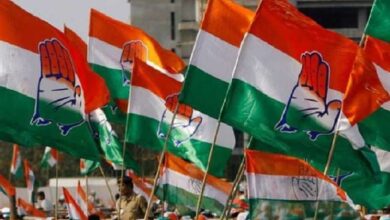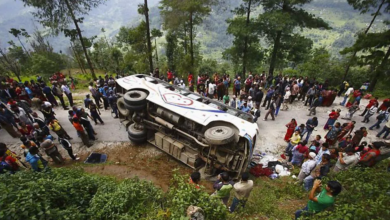Hope in the midst of economic crises

[ad_1]
Due to the epidemic, crores of people of the country who were already in crisis between poverty and unemployment, are now in danger of going into extreme poverty.
Jayantilal Bhandari
Due to the epidemic, crores of people of the country who were already in crisis between poverty and unemployment, now there is a danger of going into extreme poverty. This can also be estimated from the United Nations Development Program (UNDP) report which states that around twenty one million people in poor and middle-income countries, including India, will go into extreme poverty by 2030 in the world under the long-term consequences of the pandemic. can.
The country’s economy has not yet recovered from the impact of the second wave that the danger of a third wave is in front. This threat is proving to be a challenge again for the economy coming back on track. Still, along with the difficulties of industry-business, the concerns related to poverty, employment and declining income of the common man are telling how the economy is going through a serious crisis. The poverty and employment-related problems, especially of the working class of small scale industries and the unorganized sector, have become acute. According to the market reports of August 2021, the demand situation is still very weak. At the same time, uneven monsoon rains have also raised concerns about inflation.
In the midst of this scenario, reports of increasing poverty and loss of employment opportunities due to the pandemic in India have also raised concerns in the country and the world. A study by Azim Premji University states that in the first phase of the Kovid crisis last year, about 23 crore people have gone below the poverty line. This is the section which is earning less than the national minimum wage of three hundred and seventy five rupees per day. The report of the American research organization Pew Research Center said that the corona epidemic pushed seven and a half crore people into poverty in India last year.
In the report, those earning two dollars per day i.e. about one and a half hundred rupees have been kept in the category of poor. Now the situation is that the crores of people of the country who were already in crisis between poverty and unemployment due to the pandemic, are now in danger of going into extreme poverty. This can also be estimated from the United Nations Development Program (UNDP) report which states that around twenty one million people in poor and middle-income countries, including India, will go into extreme poverty by 2030 in the world under the long-term consequences of the pandemic. can.
But even in this time of crisis, four advantageous economic favorable conditions for the Indian economy appear to be emerging. The first among these is strong agricultural growth rate, record foodgrain production and record agricultural exports. The second is foreign exchange reserves reaching record highs. The third strong side that is visible is the record inflow of foreign direct investment. And the fourth thing is that the fast growing stock market is raising expectations. There is no doubt that in the last one and a half years, the country has got the maximum support from the agriculture sector.
Therefore, in the last few years, the government has also kept the agriculture sector in high priority. Above all, exports from the agricultural sector have increased rapidly. In the current crop year 2020-21, the total production of food grains is estimated to be 3086 million tonnes, reaching a record level. This food grain production is higher than the total production of 297.5 million tonnes last year. The Economic Survey 2020-21 said that during the pandemic, the country’s gross domestic product (GDP) fell sharply and went well below zero, but agriculture’s growth rate increased by more than three per cent.
If we look at the procurement of crops happening in the Rabi season, we find that there has been a record purchase at the Minimum Support Price (MSP). One special thing is that according to the Food Corporation of India, there was a safe stock of about 772 million tonnes of food grains in the government godowns in the country on April 1, 2021, which is almost three times the requirement.
It is noteworthy that according to the latest report of the Reserve Bank, the country’s foreign exchange reserves reached a historic record high of $ 621.464 billion on August 14 and India became the fourth largest country in the world with foreign exchange reserves. While India’s global economic credit has increased from this huge foreign exchange reserves of the country, the import needs of more than a year can be met from this reserve. Now the foreign exchange reserves of the country have become an important part of the country’s international investment position.
It is also no less an achievement that in the year 2020, the foreign direct investment (FDI) inflow into India increased by 25.4 percent to $ 60 billion in the midst of the global crisis of the pandemic. In the year 2019 it was fifty-one billion dollars. India was ranked eighth in the world in terms of receiving FDI in 2019 and dropped to fifth in 2020. Even though there was a major decline in the economies of the world in the last financial year, there are many reasons for the foreign investors preferring India for FDI. There are better returns on investment in India. Indian market is a market with increasing demand.
The bullish trend in the stock market is also indicating the betterment of the economy. The BSE index which was on a slope with 25981 points on last year i.e. 23rd March 2020, appeared at a high of 55,944 on 25th August this year. At this time there is a competition to bring IPO in the stock market. The participation of retail investors in IPOs has increased by 25 per cent. More than one crore forty lakh demat accounts have been opened in the last financial year. The number of demat accounts in the country has now crossed six and a half crores. Especially in the budget of the current financial year 2021-22, a big strategic step taken by the government to increase the growth rate and revenue, has given a big boost to the stock market.
The way in the budget of the current financial year, along with the steps taken to promote privatization, insurance, banking, electricity and tax reforms have also given impetus to the stock market. In the budget for the financial year 2021-22, the infrastructure, health, manufacturing and services sectors have also got a boost in the stock market. Increasing the foreign direct investment (FDI) limit in the insurance sector to seventy-four percent will help the sector to get fresh capital and increase business. A clarity strategy on dividend has also been ensured in the budget for FY 2021-22. All this has increased transparency in the stock market and investors are getting attracted to invest money in the market.
In the kind of economic and industrial challenges that are facing at this time, more strategic efforts are necessary to increase the growth rate in the current financial year. It should also be noted that at this time vaccination should reach maximum number of people according to the target. The spending perception of the people in the country should be improved. For the economy to grow, it is necessary to create a desire to spend more for basic needs in its huge consumer market. Steps should be taken strategically by the government to increase the purchasing power of the people to create new demand. In order to make the industry-business dynamic, even after four years of the implementation of GST, the obstacles that are being faced regarding GST should be removed. Only then will the economy progress.
.
[ad_2]




